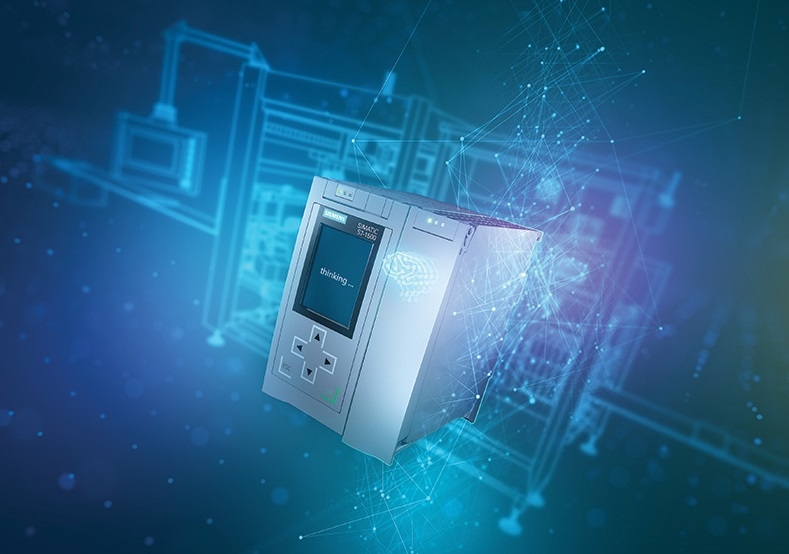Siemens at the forefront of an AI-driven Vietnam
 |
| The new SIMATIC S7-1500 TM NPU module with integrated AI |
It is said that AI offers tremendous potential for industry. What specific insights does Siemens have on this?
 |
| Pham Thai Lai |
AI has widely emerged in our daily life in various ways. For example, today we are using face or speech recognition as a given. In the last two or three decades, major technology advances have made more powerful hardware and software and improved computing power and data transmission. This promotes and offers new areas and dimension of using AI to create entirely new industrial opportunities for flexible and efficient production, even when it comes to complex and increasingly customised products in small batch runs.
The consequences will be significant. According to a PricewaterhouseCoopers study, AI could contribute up to $15.7 trillion to the global economy in 2030, and a total of 62 per cent of large companies have already utilised AI technology by 2018.
Furthermore, the industry is becoming increasingly digitalised. Data is continuously generated, processed, and analysed. The volumes of data in production environments are the basis on which digital representations of entire plants and systems are generated.
These digital twins have been used for some time to structure the planning and design of products and machinery – and production operations themselves – and do so more flexibly and more efficiently while manufacturing high-quality, customised products faster and at an affordable price. And thanks to AI, the machines and processes can now gather insights from these high volumes of data by themselves and optimise their processes during live operation.
AI opportunities in industry address predictive analytics, condition monitoring, visual quality inspection, autonomous systems, and real time operations management. But it has also accelerated the creation of new business models as with the combination of cloud solutions like MindSphere – which is a Siemens cloud-based, open Internet of Things (IoT) operating system – and intelligent applications, which enable support for the ongoing process optimisation improving efficiency, availability, and connectivity These are preconditions for all industries to be future-proof to leverage the value of AI.
How active is Siemens in AI in particular, and what are the impacts brought about by AI applications at the company?
Siemens has been active in data analytics and AI for 30 years, advancing technologies and tapping an enormous business potential in the context of machine intelligence and human augmentation. Siemens researchers were among the first in the 1990s to harness artificial neural networks for innovative solutions, namely for the optimisation of energy-intensive steel plants.
In fiscal 2018, Siemens invested €5.6 billion ($6.17 billion) in research and development (R&D), with nearly 44,000 employees working in R&D, and 24,500 software engineers globally. Data analytics and AI, as one of the core technologies, are being powered by more than 200 AI researchers and over 1,000 contributors from the divisions all around the globe. AI technologies are applied in proof-of-concepts but also products in operations for many years. Most recently, Siemens released the Neural Processing Unit (NPU) module which enables customers for the first time to use AI on the control level – enabling AI applications distributed over all levels from MindSphere, to Industrial Edge, to Controller, to the Field devices.
What is the exact relationship between AI and Industry 4.0?
Data and AI are giving Industry 4.0 a huge boost. Intelligent software solutions can use the high volumes of data generated by a factory to identify trends and patterns that can then be used to make manufacturing processes more efficient and reduce their energy consumption for instant. This is how plants are constantly adapting to new circumstances and undergoing optimisation with no need for operator interaction.
As the level of networking increases, the AI software can learn to read between the lines, which can lead to the discovery of many complex connections in systems that are not yet or are no longer evident to the human eye. Intelligent software with sufficiently intelligent analytical technology is already available. But whether data processing is performed using a cloud solution or at the local level (for example, using edge computing) will depend on the user’s requirements.
Data on an edge platform is available more quickly and at a higher resolution, whereas a considerable amount of computing power is available in the cloud. In many cases combining edge and cloud computing is required to benefit from both worlds.
MindSphere can be used to link products, plants, systems, and machines. It is one of the most important foundations enabling the use of AI in industry. MindSphere performs extensive analyses to make the vast amounts of data generated by IoT useful for optimisation, simulation, and decision-making.
Last but not least, the digital twin enables virtual testing of a variety of scenarios and promotes smart decisions in areas such as optimising production. In the future, using a digital representation of a machine tool and the associated manufacturing process, AI will be able to recognise whether the work piece currently being manufactured meets quality requirements. Moreover, it determines the production parameters that need to be adapted to ensure that this remains the case during the ongoing production process. As a result, production is made even more reliable and more efficient and companies even more competitive.
What are the prospects for developing countries like Vietnam in pursuing AI?
Today, Vietnam is one of the world’s fastest-growing economies with an overall GDP reaching up to 7 per cent in recent years, and with the industry sector as main driver with 8.8 per cent in 2017. AI and digitalisation will help to improve the competitiveness of the country, especially in the industry sector, and therefore contribute to even stronger growth of Vietnam.
Furthermore, with a population of nearly 97 million people, including 62 million active social media users, and a median age of 31 years (meaning that half the population is younger), Vietnam today already embraces the next generation of digital natives, with high digital affinity and direction towards competence building, with great potential and AI opportunities.
Vietnam has a great landscape of businesses which can fully utilise the potential of AI. For example, VinFast selected Siemens as an industrial software partner in order to manufacture the first Vietnamese car within only 21 months. The VinFast car factory is one of the most state-of-the-art 4.0 Industry factories, and is equipped with Siemens’s latest automation hardware and software, which built the fundament to unlock the future value of AI along the entire manufacturing value chain.
What suggestions can be made to accelerate the progress of AI in Vietnam specifically?
AI is making an impact on many industries in Vietnam, with a current focus on business-to-customer, such as e-commerce and transportation, due to device and data availability. In transportation, Siemens is currently working with Hanoi to deploy intelligent image process algorithms for dynamically real-time traffic data analysis in order to regulate traffic lights in a pilot study.
Besides this, there has been an uprising towards the business-to-business sector and its beverages, water, and manufacturing business. However, a lot of things need to be done further to make AI work for the country.
Firstly, the implementation of AI in the context of Industry 4.0 is a journey that requires a clear strategy and roadmap embracing the dimensions of data, computation, talent, and venturing, but also addressing the right industry segments. In this context, initiatives such as the Smart Industry Readiness Index allow to assess and prioritise the digital maturity of industrial segments.
Initiatives such as innovation and entrepreneur centres enable to accelerate proof of concepts, which can simulate the potential impact of AI following the “fail-fast” and lean startup methodologies.
Secondly, creating impact with AI needs a lively AI ecosystem involving corporates, education, venturing, and startups pushing the adoption of AI technology responsibly.
Thirdly, as there is a shortage of AI talents all around the globe, it is of importance to focus on education and skill-building, not only for improving AI and machine learning competences, but also with the field of software engineering.
A hackathon and bootcamps are great ways to foster the entrepreneurial spirit of the younger generation and the startup ecosystem, enabling industrial companies to provide real-world challenges with impact, as well as to attract the next generation of AI talents. Vietnam has a lot of this talent and we need to jointly polish those raw diamonds to make them shine in an AI future.
What the stars mean:
★ Poor ★ ★ Promising ★★★ Good ★★★★ Very good ★★★★★ Exceptional
Related Contents
Latest News
More News
- Takeda supports health resilience amid climate change challenges (December 18, 2025 | 12:39)
- Mondelez Kinh Do - a chapter of purpose-led leadership in Vietnam (December 18, 2025 | 09:44)
- VNPAY services receive the highest-level PCI DSS international security certificates for six consecutive years (December 17, 2025 | 23:47)
- PPL extends its reach into ASEAN (December 17, 2025 | 15:44)
- Over 600 BUV graduates meeting quality benchmarks across triple quality assurance levels (December 17, 2025 | 13:00)
- HEINEKEN Vietnam partners with Ho Chi Minh City Traffic Police on road safety drive (December 17, 2025 | 09:42)
- BUV and China’s CSCSE sign MoU to boost educational cooperation (December 17, 2025 | 08:00)
- PVT Logistics honoured with ‘Fast Enterprise Award’ at APEA 2025 (December 16, 2025 | 18:22)
- Empowering Sustainable Data Centers with Smart Infrastructure Solutions (December 16, 2025 | 13:59)
- Vietjet wins gold ESG transport sustainability award in Taiwan (China) (December 13, 2025 | 22:03)

 Tag:
Tag:






















 Mobile Version
Mobile Version